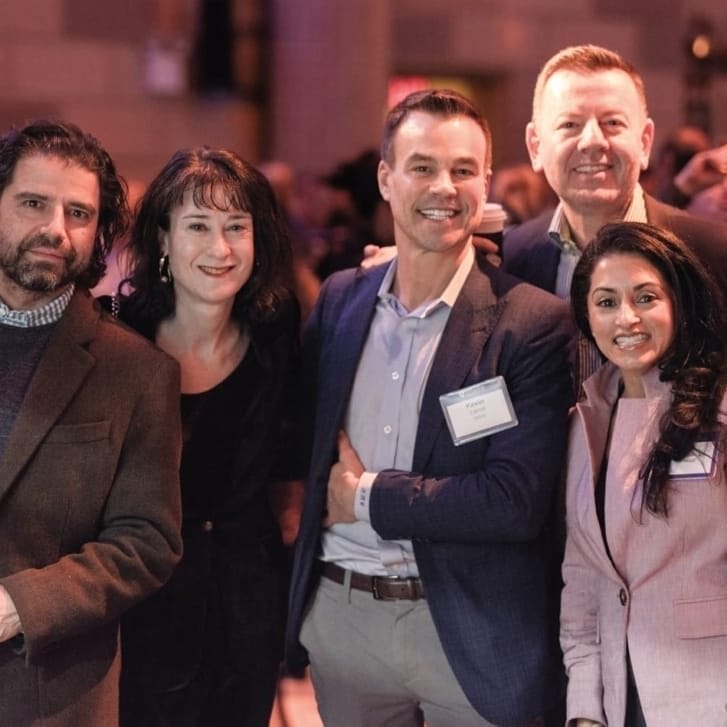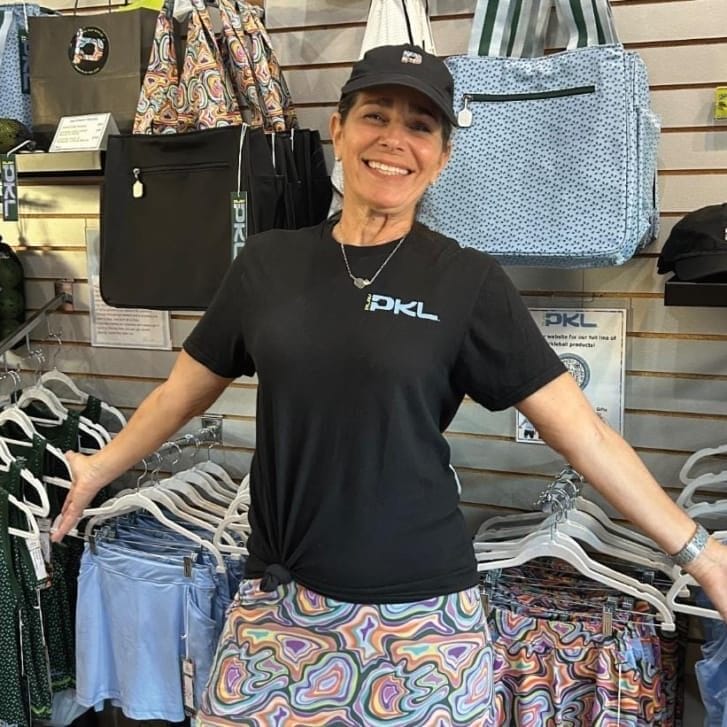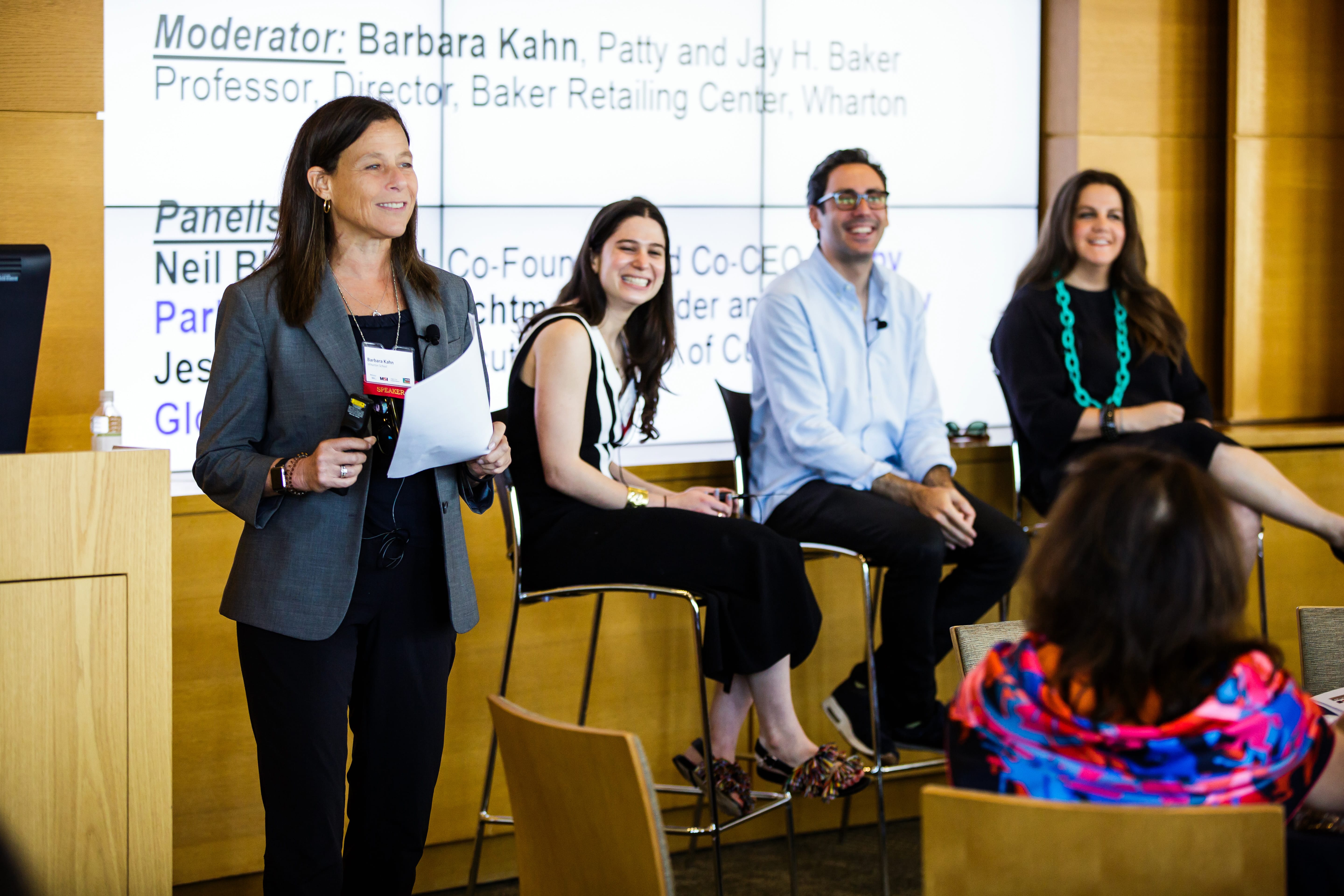(Left to right): Wharton marketing professor Barbara Kahn moderating a discussion with Jessica White W12 (Executive Director of Customer, Glossier), Neil Blumenthal WG10 (Co-Founder/Co-CEO, Warby Parker), and Rachel Shechtman (Founder/CEO, Story). Photo: Tommy Leonardi
New technologies and ways to communicate and buy have vastly changed the shopping experience and opportunities for retailers—think smart phones, online customer reviews, emojis in marketing messages, store pick-up of online orders, augmented reality apps, and pop-up stores, just to name a few.
To shed light on questions emerging from this new retail world, Wharton’s Baker Retailing Center held a conference on June 22-23 on “Consumer Response to the Evolving Retailing Landscape” in collaboration with the Marketing Science Institute and the American Marketing Association’s Consumer Behavior Special Interest Group. Academic and industry participants from 16 countries shared their research and perspectives.
Here are some highlights of the conference program:
Customer Focus
Retailers on the Baker Retailing Center’s Director’s Council, a group of innovators with a mostly digital focus, explained that their business strategies are driven by customer preferences and needs rather than the channels of the moment or the latest tech. Neil Blumenthal WG10 (Co-Founder/Co-CEO, Warby Parker), Rachel Shechtman (Founder/CEO, Story), and Jessica White W12 (Executive Director of Customer, Glossier) said their companies prioritize meaningful customer interaction and engagement. Given their control over most of their value chain due to their vertical integration, these retailers are able to implement changes quickly—an advantage in a world of constant change. Plus, their digital focus and data mindset help them leverage analytics (e.g., analyze product return patterns to modify merchandise).
Dissecting the Customer Experience
Marketing professor Katherine N. Lemon (Boston College) proposed a novel framework to deconstruct the customer journey that gives companies a scheme to analyze and improve brand interactions. Adding real-world examples for illustration, Frank Grillo (CMO, Harte Hanks) suggested leveraging data and analytics to better consider the personal and situational context of a customer’s decision-making. For example, messages of moving-related promotions could be tailored by figuring out likely reasons for someone’s move based on the old and new addresses (e.g., divorce, promotion, new baby).
Intricacies of Gift Giving
While gift registries serve gift recipients, some gift givers don’t like using them, especially for closer contacts, because they make it difficult to convey one’s relationship with the recipient, as marketing professor Susan Broniarczyk (University of Texas at Austin) explained. Gift givers might also be faced with buying a gift that conflicts with their own tastes, inducing post-purchase identity reconciliation—for example, by acquiring items that match their identity.
Too Beautiful to Consume
Paradoxically, beautiful products aren’t always a blessing for brands and consumers, according to marketing professor Andrea Morales GRW02 (Arizona State University). Consumers may limit their usage of pretty products in order to preserve an item’s beauty, which causes them to enjoy consumption less. One reason for this is the notion that aesthetic products require greater design and production effort, which people don’t want to destroy. This has been shown in studies involving plain versus decorative toilet paper, napkins, and cupcakes.
Touching Products
Some shoppers like to touch products to check out their physical qualities or simply because they enjoy the sensory experience. Marketing professor Joann Peck (University of Wisconsin) has found that shoppers’ need for touch varies by person, country, product category, and situation, and that touching a product can increase both purchase likelihood and willingness to pay. This could be due to a sense of psychological ownership derived from knowing and controlling an object and the endowment effect caused by emotional attachment and loss aversion.
Customer Journey Archetypes
Professor of marketing Leonard Lee (National University of Singapore), Wharton marketing professor Barbara Kahn, and other colleagues developed a typology of 12 shopper journey archetypes (e.g., classic, impulsive, retail therapy) based on whether shoppers have purchase goals or not and whether they are affectively or cognitively-oriented. This classification can help companies find ways to improve customers’ experience throughout the customer journey.
Luxury Pop-ups
Wharton marketing professor and former Dean Tom Robertson—along with marketing professor Hubert Gatignon (INSEAD) and Wharton Postdoctoral Fellow in Marketing Ludovica Cesareo—is investigating pop-up stores by luxury brands such as Louis Vuitton, Chanel, Hermès, Prada, and Gucci. The research team examines shoppers’ motivation to visit luxury pop-ups and their response to the experience, ultimately connecting these variables to success metrics for brands.
Online Reviews
Marketing professors Tamar Avnet (Yeshiva University), Anne-Laure Sellier (HEC Paris), and Shiri Melumad (Wharton) found that people’s preferred scheduling style—organizing tasks based on a certain time (clock-time schedulers) versus creating to-do lists without times based on order (event-time schedulers)—correlates with the kinds of aspects they focus on when both writing and reading reviews. Clock-time schedulers focus more on competency features (e.g., price, wait time, check-out efficiency) while event-time schedulers tend to focus on emotional/sensory aspects (e.g., ambiance, views, colors, scent).
Referral Coupons
Why do customers share referral coupons with their family, friends, or co-workers? Marketing professors Sara Hanson (University of Richmond), Monika Kukar-Kinney (University of Richmond), and Hong Yuan (University of Oregon) found that experts in a product category are more likely than non-experts to share a referral coupon. Sharing is also more likely when the referral coupon is for a family member as opposed to a co-worker, but the likelihood is similar to when no type of coupon recipient is specified.
Editor’s Note: Visit the Baker Retailing Center’s conference publications website for more content from the conference. An upcoming issue of the Journal of the Association for Consumer Research will publish select research projects on the conference topic.


























